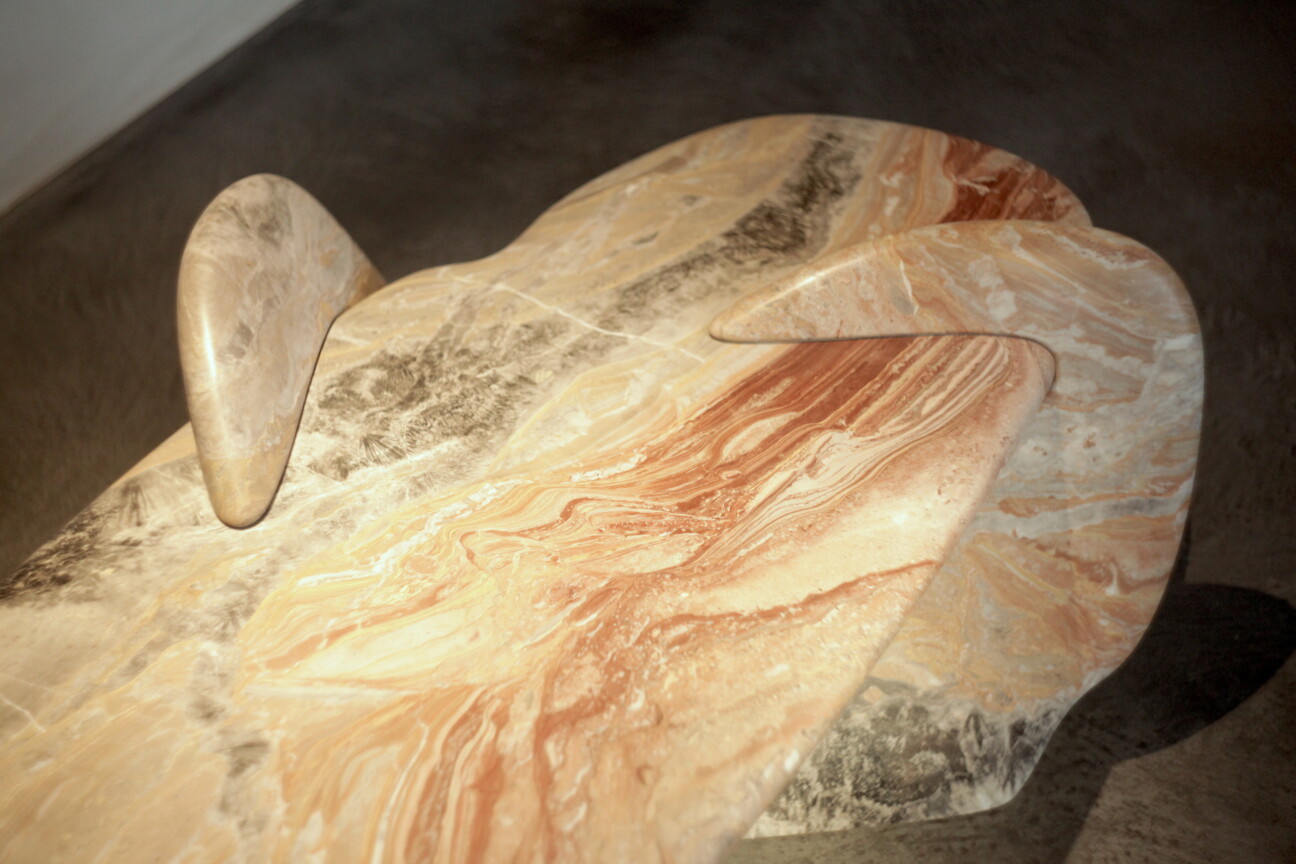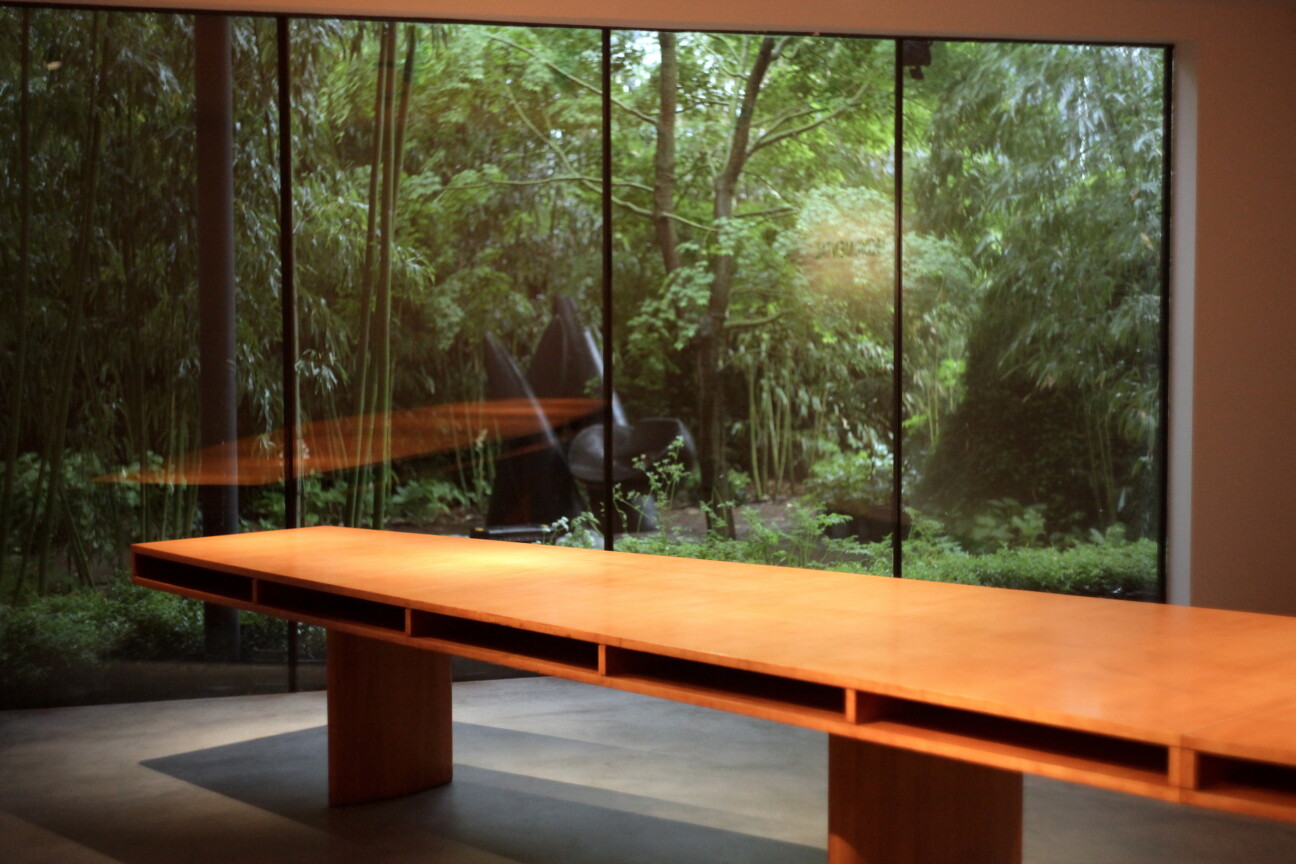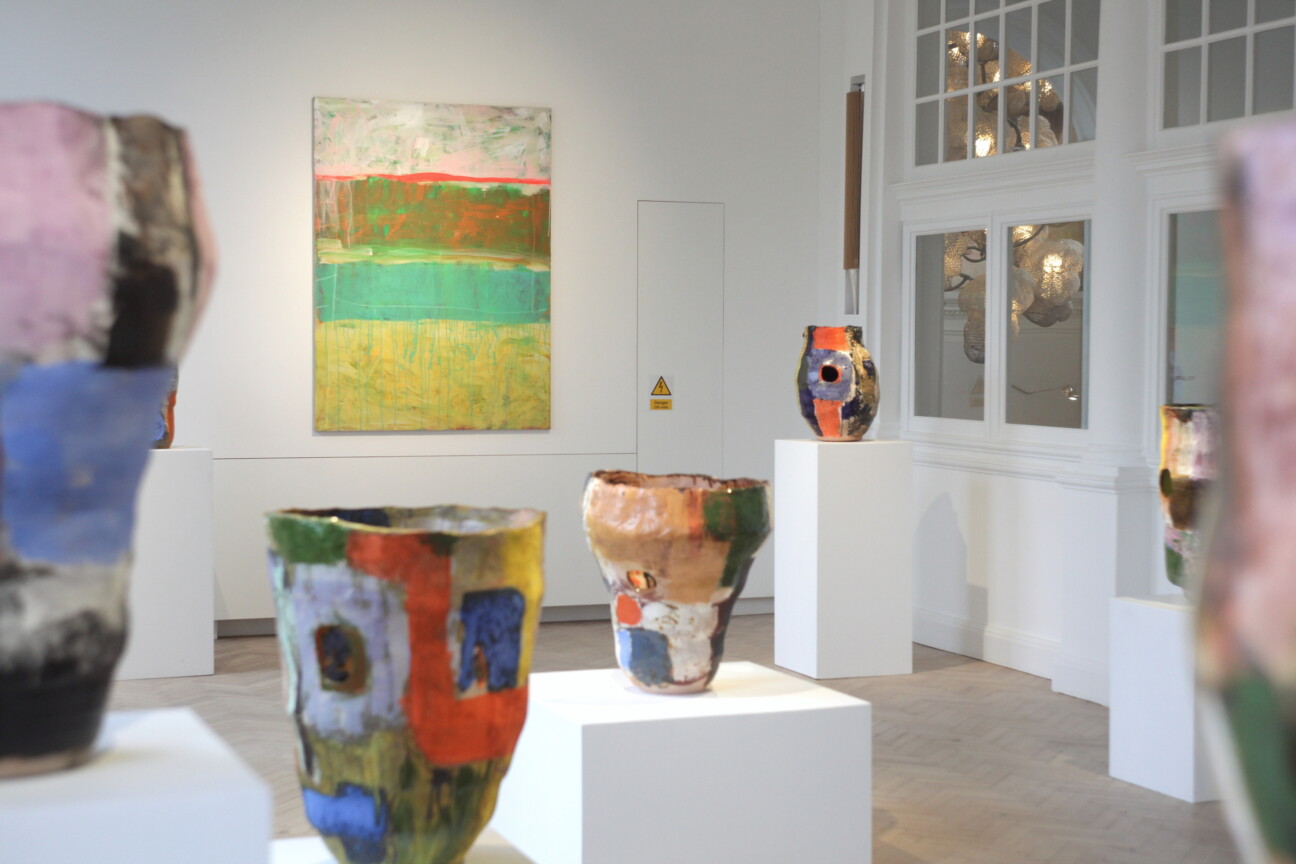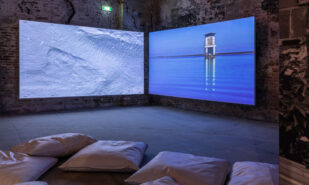Upon the elongated facade of Ladbroke Hall, the historic Sunbeam-Talbot factory in Notting Hill, one would scarcely discern the ecosystem flourishing within—a concert venue, restaurant, exhibition halls, and the hidden gem, the Carpenters Workshop Gallery. This space, diverging from the quintessential ‘white cube’ image so readily conjured at the mere utterance of an independent gallery, opened its doors to a series of exhibitions featuring collectible design objects on May 16th. Days later, on a drizzly morning, the absence of visitors lent the venue to personal contemplation, with the displayed objects and distinctive setting evoking the aura of a private museum or an abandoned film set.
Hidden Treasures of Ladbroke Hall: A Journey through Carpenters Workshop Gallery

Upon entry, one is greeted by Yinka Shonibare’s Windy Chair; the placement of this whimsically curved, vivid object, resembling a sail or a piece of fabric frozen mid-billow, in the dimly lit reception area might symbolize the post-colonial narrative threading through Europe and Africa—a recurring leitmotif in Shonibare’s body of work. In 2014, he started a series of ‘air sculptures,’ crafted from materials like aluminum, bronze, or fiberglass, hand-painted to mimic Dutch wax patterns. Since then, these objects have adorned Central Park in New York, Expo 2020, and the lawns of various North American colleges.
Adjacent, Charles Trevelyan’s Vignettes series blurs the lines between sculpture and functional object, deftly maintaining physical equilibrium and a balance of experimentation and functionality, ambiguity and recognizability. The console tables—a cascading array of rounded forms with sinuous textures of natural marble—themselves evoke surfboards cradled in a wave’s embrace.

Venturing further in, the Credenza sideboard by Joaquim Tenreiro and Le Corbusier’s Bureau des Ministres command attention. The open-angled desk, a paragon of rationality and minimalism, was originally commissioned for the ministerial palace of Chandigarh—a city whose master plan and key structures form part of the Swiss architect’s monumental legacy.
Across the last hall of the first floor, an 8-meter Conference Table by Charlotte Perriand, a collaborator of Fernand Léger, Jean Prouvé, and Le Corbusier, serpentines its aerodynamic form. Originally conceived for a Franco-American hospital in Normandy, it later adorned the UN headquarters in Geneva, in line with Perriand’s esteemed post-war clientele, such as Air France and the League of Nations. While standing solitary as the hall’s sole exhibit, it is complemented by another spectacle: a panoramic window framing the garden beyond, showcasing how architecture and minimalist interiors can mediate the contemplation of nature. Does this room really resemble the Ceylon house of the father of tropical modernism, Geoffrey Bawa, or perhaps a set from an Apichatpong Weerasethakul film? Alternatively, it’s the rain’s theatrical cadence against bamboo leaves that instills a sense of serenity and the anticipation of an ethereal event.

Ascending to the second floor, another brightly packaged surprise awaits: the exhibition From California with Love, its title alone evoking sunny expectations. Here, Roger Herman’s ecstatic ceramics take the stage: 15 vases of irregular shapes and ambiguous perforations, each embodying the principle that ‘Perfect is horrible.’ These pieces, born of an intuitive approach to creation and glazing, invite comparison to a spontaneous yet joyful gathering attended by long-unseen friends. The abstract neo-expressionist canvases hung throughout, though somewhat overshadowed by the ceramics, represent an effort to translate the chromatic experiment into two dimensions.
The building continues to unfold, ready to flaunt and boast, then transitions into a restaurant, then descends to a Rick Owens-designed bar on the first floor, and leads out to the garden where Jean Prouvé’s 6×6 modular house stands—a vision from the late 1940s, once imagined as a salve to the post-war housing crisis, now a sentinel of design history. The Carpenters Workshop Gallery reveals itself as an ultra-minimalist core behind a demure yet inviting facade in London, ranking among the most captivating design and architecture experiences to grace the senses.





